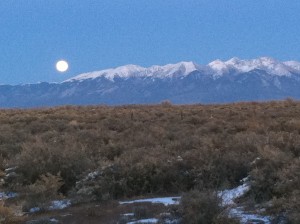People often ask me why I choose to practice rural medicine. “After all your training you could go anywhere,” they say. It is true, rural medicine has its challenges; fewer diagnostic tools, little or no access to specialists, four or more hours from definitive care and we are sometimes faced with bad injuries from farm equipment, hunting and car accidents. Sometimes the weather is bad and the roads are closed preventing us from transferring our really sick patients to a bigger city hospital this of course can be very stressful for the entire hospital staff.
The challenges and problems actually make us better doctors. We often have to rely on our clinical skills rather than a fancy test or expensive equipment to make a diagnosis or clinical decision. Seeing a patient in the emergency room, then taking care of them in the hospital and then seeing them in the clinic gives us greater insight into the disease process and the way the body heals. We see how nature organizes the body through the entire course of a bad case of pneumonia or congestive heart failure.
As an osteopath this gives greater insight in to how we can co-operate with the bodies inherent and natural healing forces. It is also wonderful for the patient to have such continuity in their care. Some times our patients need medical services only available at a bigger facility in the city and we don’t hesitate to send them there if that is what is needed. Usually it is very difficult to get our patients to go. They don’t want to leave the personalized care they get in our little hospital.
Practicing full spectrum rural family medicine is the best way to learn osteopathic medicine. Osteopathic medicine is really a study of how we can cooperate with and enhance the natural laws of healing and there is no better school than a quiet rural environment.
Of course I am leaving out the best part of rural family medicine – the patients. Most are so kind, and grateful and they often let us know it. It is not uncommon to receive a pie, or lunch or home made beer during an office visit from a kind patient. It’s our patient’s sincerity and gratitude that keeps us going amongst all of the challenges.

